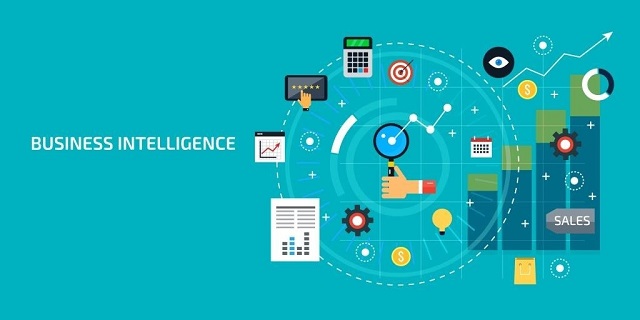Turning Data into Insights with Business Intelligence

In today’s ultra-competitive world, businesses can edge ahead of the competition by maximizing the value of data they possess. How can we do so? Turning organizational data into insights using popular and efficient business intelligence (BI) tools.
The abundance of data in the modern business ecosystem can be a boon for making informed decisions. However, it may be challenging for a human brain to get its head around the vast file size, let alone extract insights from it. Our leadership team may face challenges in sifting through the available data and formulating recommendations to improve the business’s profitability.
Also, leaders must have sufficient information backed by data to rationalize unsatisfactory performances.
A report shows business organizations using data analytics facilitate quicker and more efficient decision-making, thus increasing the bottom line.
The article underlines the importance of BI tools and how organizations can leverage data analytics to build a strong foundation for short & long-term growth.
What is Business Intelligence?
Business Intelligence comprises the software & services to collect, manage, & analyze data to extract key insights that underpin decision making. The combination of every tool and method from the beginning to the reporting comes under the purview of BI.
Organizations leveraging the full potential of their data using BI can accelerate their performance and competency in the market.
In a Deloitte survey of Finance Executives, Cost transparency: Helping finance create business value, business analytics & cost information are the pillars for strategic decision-making and new strategies for more than 60% of respondents.
If you are a corporate executive or an entrepreneur, applying business analytics can help you make conversant decisions by understanding market trends, costing, and reasons behind unprofitable products/services.
Benefits Of Business Intelligence
- Faster analysis and reporting– BI platforms provide a detailed analysis and generate reports based on the collected data.
- Improved decision-making– BI platforms visually represent the insights from the collected data to give more control over information.
- Enhanced customer satisfaction– The reports and data insights will help businesses fix the loopholes in their product/service that will convert into higher customer satisfaction.
- Reduced costs– The BI platforms can equip businesses with more cost information to drive product/service cost reduction.
- More revenue and better competitive advantage– The above benefits increase a business’s bottom line with fast and accurate data insights.
Popular BI Tools
- Microsoft Power BI
- Tableau Desktop
- Google Data Studio
- Einstein Analytics
- Dundas BI
- Amazon Quick Sight
- Zoho Analytics
- SAP
If you fail to turn your data into valuable insights, avail of Business Intelligence Services to seek professional help.
How Business Intelligence Works?
Before understanding the working methodology, it is essential to investigate the types of business intelligence. There is classic BI, and then there is modern BI.
Classic BI is preferable for generating regulatory or financial reports using in-house data. These reports have high accuracy as they use standard and predictable data sets & questions.
Modern BI handles more dynamic data for quick insights, for example, the effects of changing market trends. Organizations use it for agility rather than accuracy.
BI tools these days are highly resourceful as they can save our time & effort in collecting, structuring, and mining the data to extract insights.
They follow a 5-step process.
Step 1: Storing the data
Data warehouses, data marts, and data lakes are three categories for data storage in BI.
Data warehouse- It is a company data repository from various systems and software.
Data marts- It denotes department-specific data. They also get funneled into the data warehouse.
Data lakes- It refers to the unorganized data in the system.
Step 2: Collecting and aggregating the data
BI platforms give the stored data a definite structure and organize them in a manner that becomes useful for various business applications to analyze and process.
Step 3: Mining the data
BI tools will study the data in this step and showcase any patterns, trends, or inconsistencies. These tools will also make predictions based on the data and help organizations with recommendations. Data mining is an integral part of Data Science Services. It studies and analyses organizational data to improve business performance with useful predictions and forecasts.
Step 4: Visual analytics
BI tools will generate visual representations of reports that will convey information about different aspects of the business. Executives and leaders can analyze these reports to make informed decisions for the organization’s benefit.
Step 5: Leading to actions
BI tools help improve efficiency by assisting businesses to plan strategically and pivot according to the requirements. However, the tool is only valid when business actions occur due to the visualization and transformation of data.
Business intelligence analysts are professionals to monitor and maintain BI tools. They can amplify the reporting quality by setting a standard and promoting consistency across the organization.
The Conclusion
Business Intelligence can establish a data culture and evolve an organization into a data-driven company. However, we must not expect instant ROI after using BI tools for collecting, mining, and reporting data.
Nevertheless, implementing and scaling BI within an organization needs proper backing from the leaders, a roadmap, and patience. And the results will be tangible.





